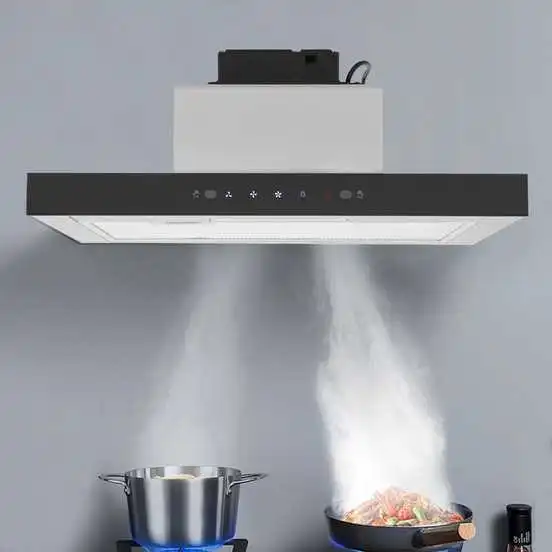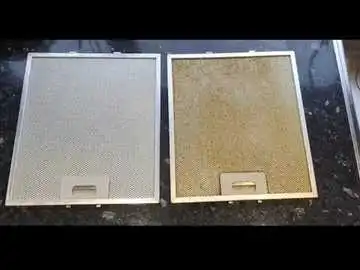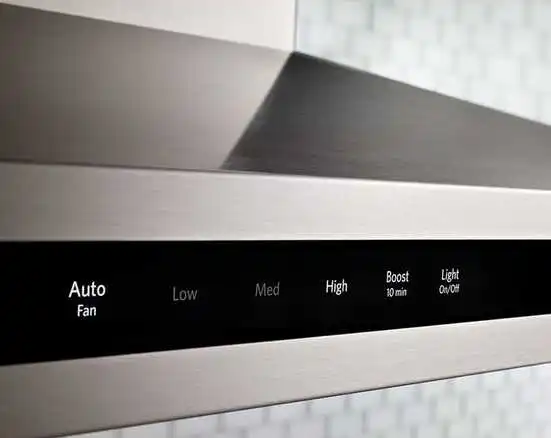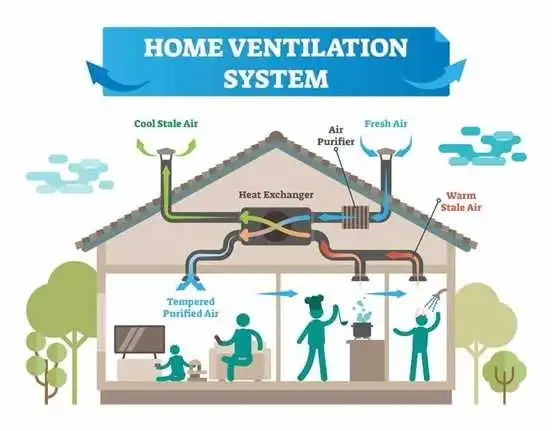Cooking, especially with gas stoves, can release invisible gases such as carbon monoxide and nitrogen dioxide, which are harmful to people and pets. A properly maintained kitchen ventilation system helps remove these pollutants, reduce contamination, and improve airflow. Common options of kitchen ventilation systems include ducted and ductless range hoods, as well as exhaust fans. Without regular care, these systems can reduce their efficiency and put your family’s health at risk.
Understanding Kitchen Ventilation Systems
Choosing the right kitchen ventilation system depends largely on your kitchen’s layout, cooking habits, and whether exterior ductwork is available. In most cases, a single system is sufficient. There are three main types of kitchen ventilation systems, each designed to address specific needs:

1. Ducted Ventilation Systems: These systems remove cooking pollutants by drawing air from the cooktop and releasing it outdoors through ducts. They are ideal for frequent cooking and high-heat methods such as frying or grilling. Common types include wall-mounted hoods with exterior vents, under-cabinet hoods connected to ductwork, and ceiling-mounted island hoods that vent through the roof.
2. Ductless Ventilation Systems: Also called recirculating systems, these units filter and return air to the kitchen rather than venting outside. They use carbon filters to remove grease, smoke, and odors. Ideal for homes without outdoor venting. Common types include recirculating under-cabinet hoods, microwave vents, and plug-in countertop hoods.
3. Exhaust Fans: are standalone units designed to remove stale, smoky, or humid air from the kitchen, improving overall air circulation. Unlike range hoods, they are not installed directly over the cooktop. These fans pull air from the room and push it outside through a window opening. They are best suited for small or secondary kitchens, or as a supplementary solution when a range hood isn’t available. Common examples include wall-mounted, window-mounted, and ceiling-mounted kitchen exhaust fans.
Step-by-Step Kitchen Ventilation System Maintenance
Below is a breakdown of routine tasks and maintenance steps to help extend the life and effectiveness of your system.

Cleaning Grease Filters
- Turn off and unplug the system.
- Remove filters by sliding or unhooking them.
- Soak in warm, soapy water or a degreasing solution.
- Scrub with a soft brush.
- Rinse thoroughly and allow to dry.
- Reinstall the filters securely into your kitchen ventilation system.
Maintaining Ducts and Exhaust Fans
- Inspect ducts and fans regularly for signs of dust, grease, or blockages.
- Watch for reduced airflow or odd noises.
- Professional duct cleaning is recommended every 2–5 years, or more frequently if significant buildup is present.
Maintaining Ductless Kitchen Ventilation Systems
- Replace activated carbon filters every 6-12 months.
- Clean evaporator coils, blower fans, and surrounding components regularly.
- Never wash carbon filters; replace them according to manufacturer guidelines.
- Always check your model number to buy the correct filters for your kitchen ventilation system.
Optimizing Ventilation System Performance

- Adjust fan speed: Most kitchen ventilation systems come with multiple speed settings, usually labeled as low, medium, high, or boost. Some range hoods feature fan icons, number settings, or LED indicators to help you choose the appropriate level.
- Use higher speeds (Level 3-4) for smoky or greasy cooking.
- Use lower speeds (Levels 1 or 2) for lighter cooking, such as simmering soup, boiling pasta, or steaming vegetables, where minimal steam is produced.
- Ensure proper hood placement: Position the hood 24-30 inches above electric cooktops and 30-36 inches above gas cooktops. This distance is crucial for effectively capturing smoke, steam, and airborne grease while ensuring safety.
- Gas cooktops produce more intense heat and open flames, requiring a slightly higher clearance to prevent damage to the hood and reduce fire risk.
- Electric cooktops, which generate less direct heat, allow for a slightly lower installation height to maximize ventilation efficiency.
Conclusion
Regular maintenance helps your kitchen ventilation system last longer and keeps your kitchen air clean. Schedule routine checks and cleaning to ensure your kitchen ventilation systems continue working at their best.









